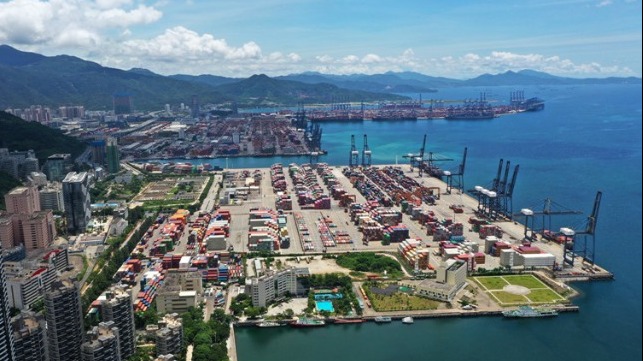Growing Backlogs and Disruptions as Yantian Port Begins Recovery

Four weeks after an outbreak of COVID-19 in southern China began to disrupt operations at the busy Yantian port, officials are reporting the first glimmer of hope that operations are starting to return to normal. However, analysts and the major shipping lines are all warning of long-term disruption, delays, and shortages, all stemming from the massive backlog at the port and the rippling impact to other Chinese ports.
In a new update to customers, Maersk reported yesterday, “After a six-day stop on export containers, the Yantian port authorities have announced that productivity is gradually set to increase as more workers return and more berths reopen.”
Although density in the Yantian container yard remains limited to approximately three-quarters of normal, import laden containers resumed operation in the western area of last week. Officials from the Yantian International Container Terminals also report that the gate-in truck quota was increased first to 6,000 and now 8,000 trucks per day. They, however, estimated that the port will reach full operation capacity in the last week of June.
While this can be viewed as positive progress, the impact on the system and the backlogs are significant. Efforts to recover are complicated by the fact that goods are continuing to flow out of the factories across China but are becoming trapped by the inability to move containers through the port.
Port officials have not publicly reported how many containers are waiting but in its reporting today CNBC cited estimates of more than 300,000 TEU sitting in the yards. Yantian is a hub serving more than 100 shipping routes with 20 large, deep-water berths. Last fall, port officials said that the monthly container throughput exceeded 1.46 million TEUs in September, breaking the global monthly record for a single terminal run by one port operator.
The reduced capacity at the port is rippling through the entire supply chain. Maersk, for example, is reported that schedule reliability will continue to suffer with their forecast of an average waiting time of 16 days. “We also want to advise that shipments not directly impacted by the Yantian situation might also be affected as we adjust our network to avoid port congestions and to limit the overall net loss of ocean network capacity due to omitting the Port of Yantian. The current average waiting time in Shekou, Nansha, and Hong Kong is between two and four days, but as more carriers omit Yantian, this number is expected to rise.”
The congestion that Maersk is warning customers about is being confirmed by other major carriers as well as analytical services. project44, the platform for shippers providing visibility into key transportation processes, analyzed ship movements, reporting a 300 percent increase in blank sailings at Yantian. They are saying that 298 container vessels with a total capacity of over three million TEUs skipping the port in the first half of June. They are forecasting that blank sailings will remain high for at least one more week.
project44’s analysis of dwell times presented a worse forecast than Maersk’s customer advisory. Over the last two weeks, the 7-day average of median dwell times on export containers from the Yantian terminal doubled in number, reaching 23.06 days on June 15, reports project44.
“While the epicenter of this particular breakdown is YICT, these numbers spell trouble across the maritime shipping world, and particularly for companies that rely on these routes,” said Josh Brazil, Vice President of Marketing at project44. “Even shipments not directly impacted by the Yantian situation could feel the impact, as carriers adjust their networks to avoid congestion at YICT.”
By some analysts' estimates, it could take as much as a month for the systems to recover and chip away at the backlogs. This, however, is entirely dependent on China’s ability to contain or eradicate the current outbreak of the virus in the southern port region.
